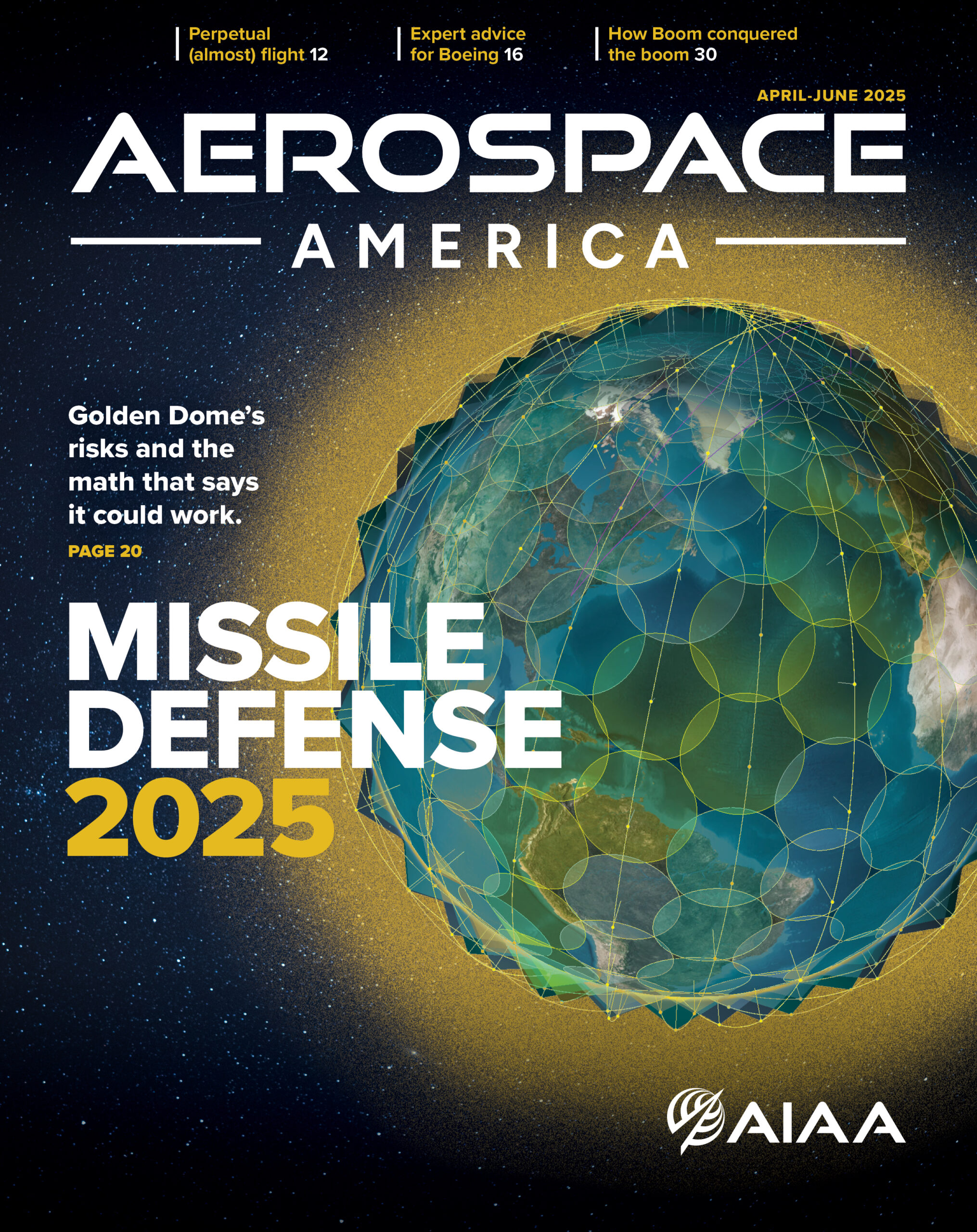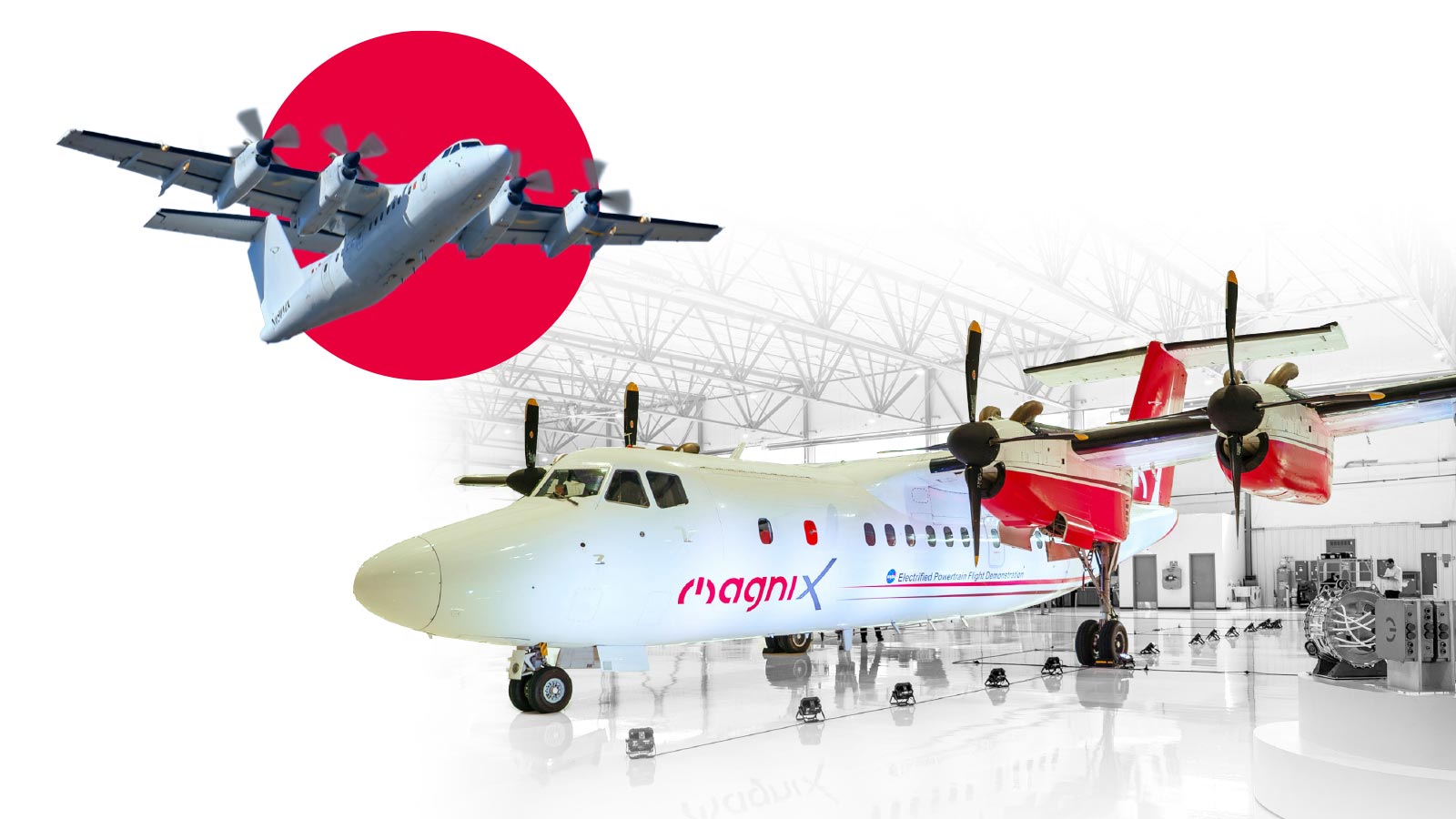Stay Up to Date
Submit your email address to receive the latest industry and Aerospace America news.
NASA contractors plan to convert a decades-old cargo turboprop into a hybrid-electric aircraft powered by a combination of fossil fuel and electricity. If all goes as planned, it will be flown for the first time next year. Keith Button learned about the conversion plan.
Inside a hangar in Moses Lake, Washington, lasers scanned across the surfaces of a 40-year-old De Havilland Dash 7 turboprop dotted with reflective stickers. The plane was immobilized on jack stands, with its wheels retracted and flaps positioned as if in cruise flight. After scanning the entire aircraft, engineers and technicians with AeroTEC, a Seattle aerospace testing and development company, adjusted the flaps and landing gear to the landing and takeoff configurations and then scanned those areas of the plane.
The end result was a digital model of the exterior of the aircraft in multiple configurations. This model is among those that will be needed to meet the June target for completing the design phase of a planned three-year effort to turn this Dash 7 into a hybrid-electric aircraft.
AeroTEC plans to fly the aircraft in 2026 for magniX, the Everett, Washington, electric aircraft motor developer that’s prime contractor for one of the aircraft that are to be flown under NASA’s Electrified Powertrain Flight Demonstration project. The goal is to show that the electric motor technology that will be incorporated into the aircraft can reduce fuel consumption by 40% while still permitting the plane to have enough power to carry 50 passengers, although the demonstrator will not do that, given its heritage as a cargo version of the Dash 7. NASA in 2021 awarded magniX a $73.4 million contract for the aircraft conversion and flight tests. The second contractor, Cincinnati-based GE Aerospace, received a $179 million contract to install hybrid-electric internal combustion engines into a 36-passenger Saab 340B.
AeroTEC is a subcontractor for magniX, which is providing the motor, controller, distributor and battery propulsion units for the Dash 7 demonstration. At Moses Lake, AeroTEC engineers must reverse engineer the entire aircraft, meaning not just its exterior but also its structure, electronics and hydraulics, so they know the implications of the changes they must make to turn the aircraft into a hybrid. They must then design and build thousands of parts to accomplish the modifications.
As is typical in the used aircraft market, the Dash 7 didn’t come with the original design data or drawings for individual structural components, explains Lee Human, president and CEO of AeroTEC. The engineers knew they would have to build their own computer models of the existing plane before they could figure out how to first replace one the aircraft’s four turboprop engines and propellers with an electric motor and propeller, and then after some flights, swap out one of the engines on the other wing with another electric unit. This would require designing new wing structural supports, new nacelle housings for the electric motors, wing modifications for high-voltage wiring and other modifications for the hybrid version. But luckily, the detailed maintenance and structural repair manuals and wiring diagrams that did come with the lease of the aircraft from Canadian operator Air Tindi provided some key information for the reverse engineering.
The engineering, building and testing steps will be the same as those for designing a new plane, though at a lower volume, Human says. The design will go through conceptual, preliminary and critical design and review phases. The modification will also require designing and manufacturing some 3,000 new parts, he says.
There are a few advantages, though, to modifying an old plane for a technology demonstration. For one thing, structural fatigue and maintainability are less of a concern, because the aircraft will be flown for fewer than 1,000 hours compared to the perhaps 50,000 hours a commercial airliner operates.
Another benefit: The hybrid-electric Dash 7 design is not destined for production. “If you’re building 100 of something, you really, really care if the material costs an extra thousand dollars or if it weighs an extra 10 kilograms,” Human says. “If you’re doing it once, you don’t really care as much.”
So, success is largely about preparation. The laser scanning of the aircraft’s surface was done with all fans turned off and doors closed to the hangar space because even sub-millimeter movements of the plane could throw off the accuracy of the scan, Human says.
Multiple scans taken from different angles marked the X, Y and Z coordinates in space for millions of points on the plane’s surface, and the scans were digitally stitched together using stickers on the plane as landmarks.
Creating the structural model required accessing and scanning the internal structure of the fuselage and wings. This data was essential for the engineers when creating the baseline model they must work from to design and build motor mounts and nacelles for the new electric motors.
“They needed to know in detail every single spar, rib, skin, bracket that’s in the aircraft that is physically taking that load,” Human says.
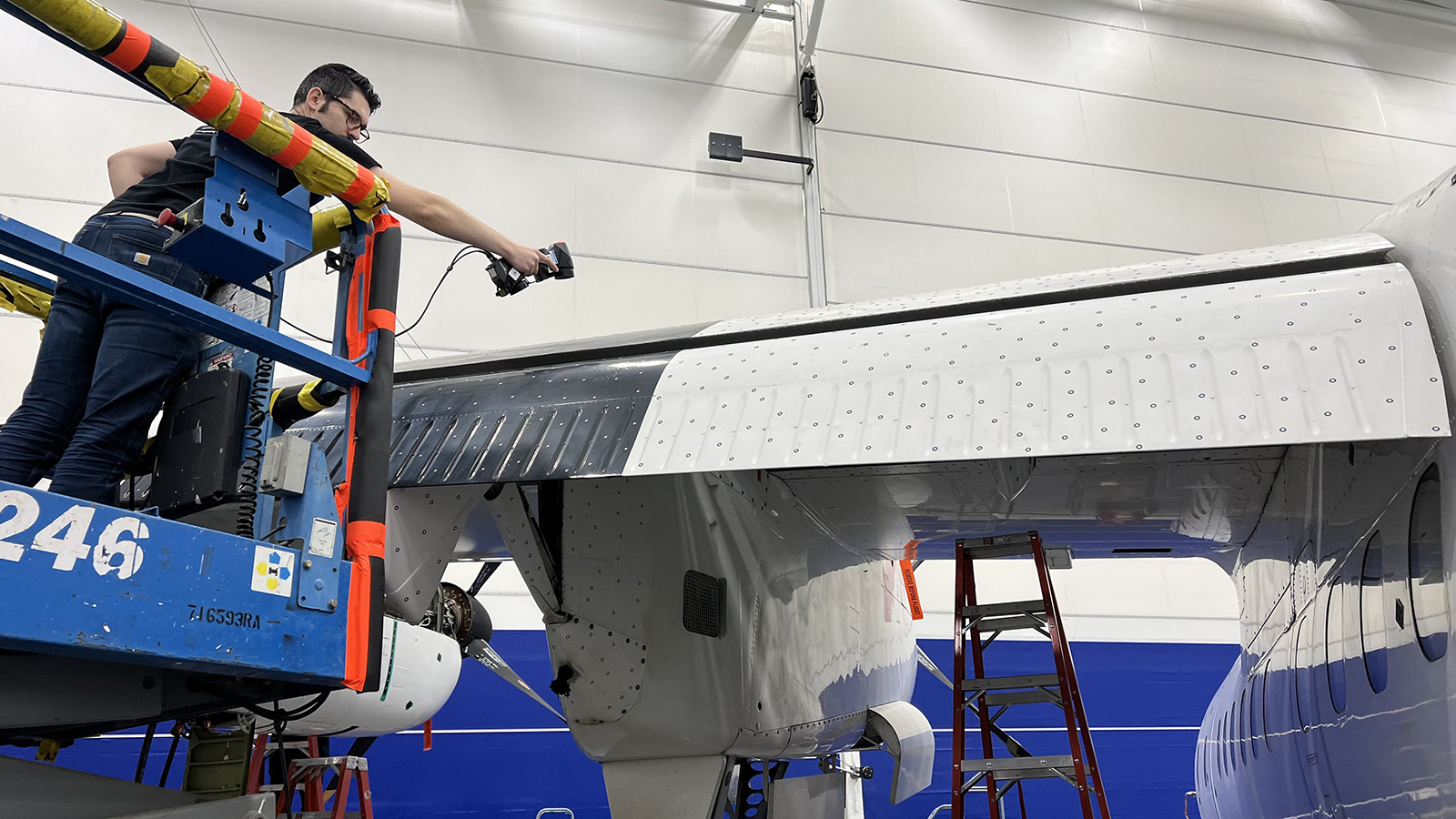
For this, some of the innards were viewed by opening access panels and scanning with handheld lasers. That wasn’t possible for the interior of the wings, so AeroTEC bought a Dash 7 wing from an airplane boneyard and cut it open. They also bought a Dash 7 nacelle to cut up because they needed a sample of the metal to test, which showed them which aluminum alloy they required for making nacelles for the electric motors.
Once the digital models were created, they removed the reflective stickers from the Dash 7 and flew it 10-15 times in March and April. The flights validated predictions from the models, such as how the plane and its materials would hold up under structural loads.
A concern was that modifying the Dash 7 wings to carry the electric motors — or other structural changes or shifts in weight in the aircraft — might cause flutter, a dangerous phenomenon in which wings or other structures begin oscillating uncontrollably.
“You’re changing the modes and the frequencies to which this aircraft vibrates when you change its structure and its mass properties; we’re just making sure that is still safe,” Human says.
So, they conducted a ground test on the Dash 7 without the new motors and propellers to create a baseline. A hundred accelerometers were attached to the aircraft to measure its response to shaking at a variety of frequencies and directions, with vibration injected into the wings, fuselage, tail and nacelles by about four shakers, either from the ground or mounted on lifts, Human says.
This baseline will be compared to ground flutter tests conducted after the aircraft is modified and before it is flown, he says.
Also, high-altitude flight poses a potential danger for an aircraft propelled in part by high-voltage motors. The thin air provides less of an insulating effect than at sea level, so the magniX engineers had to take that into account in their motor design. Extra insulation was incorporated to make sure electrical discharges would not arc between conductive materials.
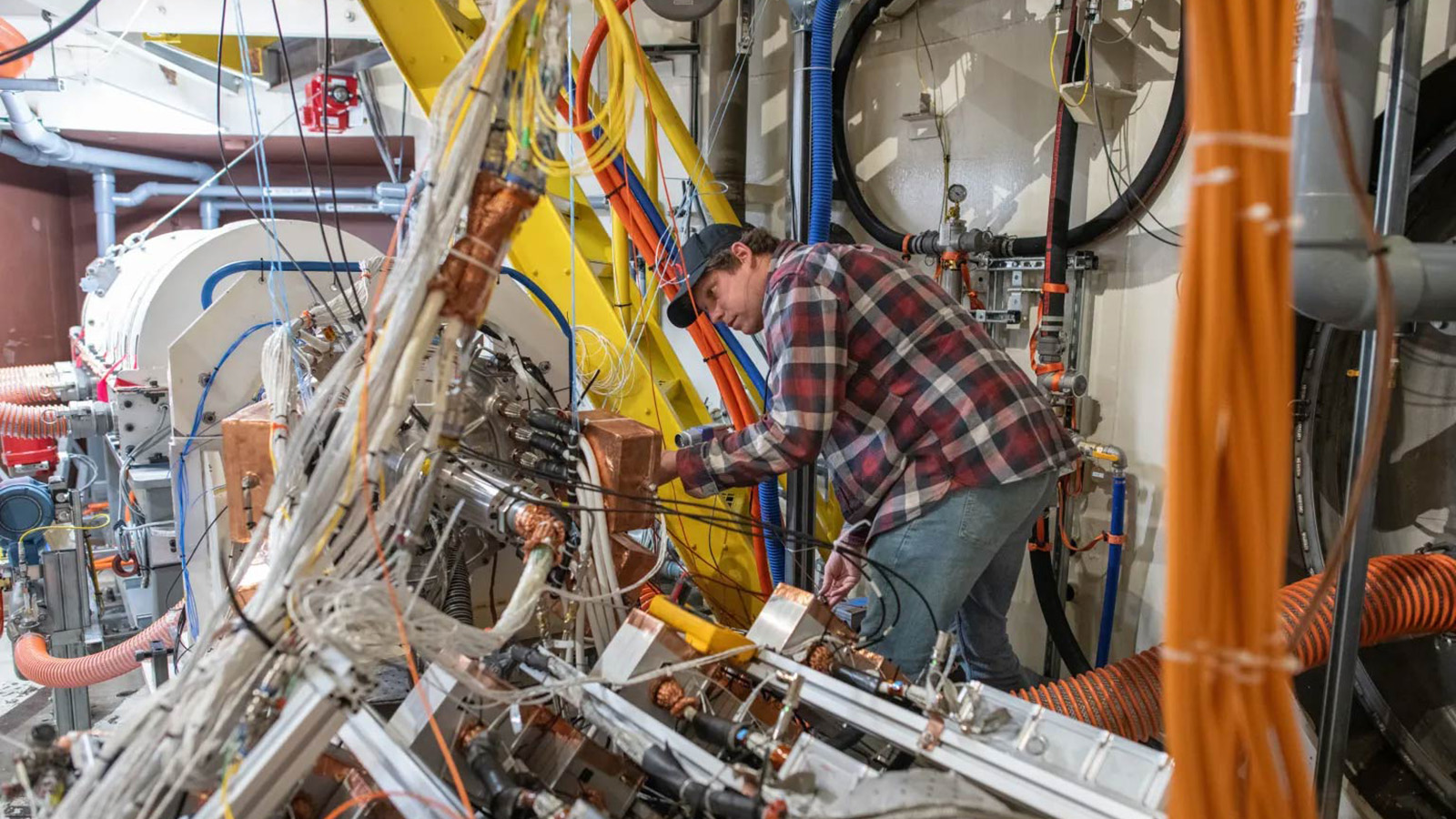
In November, magniX concluded tests with a prototype of the motors and other propulsion unit components at the NASA Electric Aircraft Testbed in Sandusky, Ohio. The propulsion unit was set up amid a spiderweb of wires and cables inside a large metal-dome vacuum chamber, designed to simulate environments with as little pressure as outer space, says Ben Loxton, head of magniX’s technical programs and testing. The chamber was closed, and a vacuum was pulled to simulate an altitude of 30,000 feet while the unit ran at 700 kilowatts under full power, while magniX engineers watched from a control room. No issues were found.
By the start of 2025, AeroTEC planned to have completed its designs for the nacelle and wing modifications necessary to accommodate an electric propulsion unit, first on the outboard position of one wing, and then after flying, on the other. Plans call for completing the fuselage design by June, the last step in modification design.
That design work takes that long in large part because many of the necessary batteries, wiring, connectors and other components can’t be purchased off-the-shelf, Human says. “It’s not like you can open up an aerospace parts catalog and just pick the stuff. The supply chain in general for these emerging technologies is frankly nonexistent.”
Instead, they have to repurpose equipment designed for other industries or, for 80% of the parts, manufacture them.
Once the flights begin with one electric motor, the engineers will incorporate what they learn and then go about replacing the outboard turboprop on the other wing with the second electric unit, Human says.
“We know we’re going to learn something when we do this installation and ground testing and flight test. And rather than build two sets of parts and install two engines, let’s just do one. There will certainly be some redesign. I don’t know what, but that’s just why we test,” he says.
Overall, though, the team doesn’t expect huge technical surprises.
“There is no one thing that’s strikingly technically impossible or technically high risk, because we’ve done electric flight before several times,” Human says. “If you just look at it from the simplest form, it’s a battery; it’s wires; it’s an electric motor. While it’s new for aviation, this is a technology that’s been around for over 100 years.”
About Keith Button
Keith has written for C4ISR Journal and Hedge Fund Alert, where he broke news of the 2007 Bear Stearns hedge fund blowup that kicked off the global credit crisis. He is based in New York.
Related Posts
Stay Up to Date
Submit your email address to receive the latest industry and Aerospace America news.
